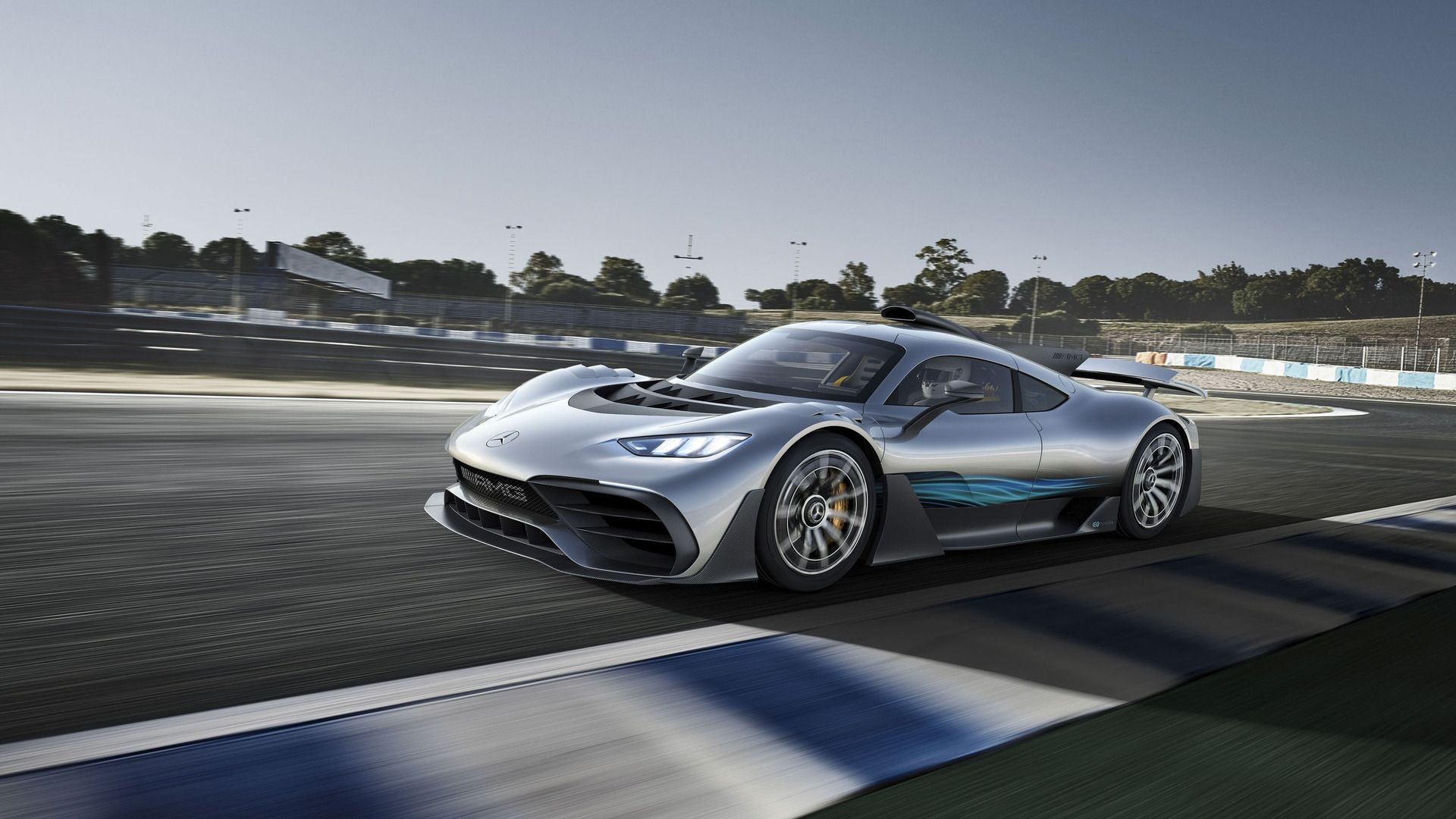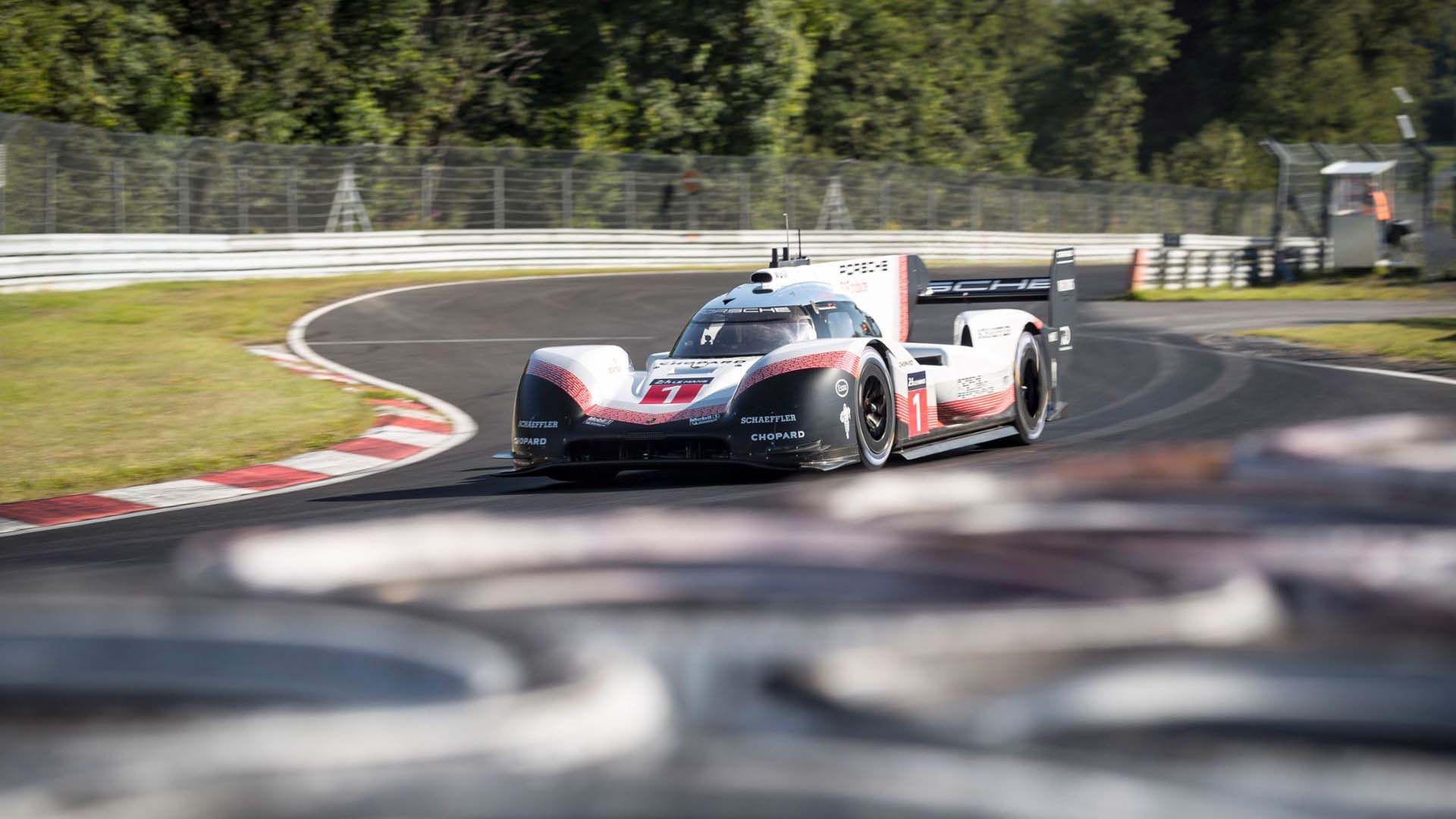Summary
- The Rimac Nevera is an electric hypercar that has set a new track record at the Nürburgring, completing the 12.9-mile track in just 7 minutes and 5.298 seconds, making it the fastest production EV around the track.
- With its four electric motors producing a combined output of 1,914 horsepower and a 120 kWh battery pack, the Nevera is significantly more powerful and lighter than other EVs like the Tesla Model S Plaid and Porsche Taycan Turbo S.
- While the Rimac Nevera is the fastest EV to go around the Nürburgring, it is not the fastest overall vehicle. That title belongs to the Porsche 919 Hybrid Evo, a modified Le Mans prototype racecar that went around the track in 5 minutes and 19.550 seconds. EVs still have some catching up to do.
Electric vehicles (EVs) have been known for their instantaneous throttle response and torque delivery. Just look at the countless Tesla Model S Plaid acceleration videos on YouTube and you’ll instantly get what I mean. Either way, whether it’s a lowly Nissan Leaf or the electric hypercar in the spotlight today–the Rimac Nevera, all EVs have a distinct instantaneous character that an internal combustion engine (ICE) car with multiple gears to deal with can’t replicate. EVs, however, can be heavier and more cumbersome than their ICE counterparts due to their batteries, but the Rimac Nevera isn’t just any other EV. It’s light on its feet and has a ton of power to reverse the rotation of the Earth. Okay, probably not the latter, but it’s enough for the Nevera to break a track record.
And, The Fastest EV Around The Nürburgring Is…
The battle for the fastest EV around the Nürburgring has mostly been a fight between Porsche and Tesla. Recently, however, it was Tesla who emerged victorious with a Model S that’s fitted with the new Track Pack. The electric sedan went around the 12.9-mile track in 7 minutes and 25.231 seconds, faster than the Taycan Turbo S’s time of 7 minutes and 33.350 seconds. But what about the Rimac Nevera? Well, let’s just establish a few things first.
The Tesla Model S Plaid and Porsche Taycan Turbo S are sports sedans that can seat four or five people (depending on the seating configuration) as well as carry their cargo at their front and rear trunks. The Rimac Nevera, on the other hand, is a carbon-fiber-clad machine with four electric motors (one on each wheel) that produces a combined output of 1,914 horsepower. It is fed by a 120 kWh battery pack that’s good for an EPA-estimated range of 278 miles, but that’s of course if you drive it sedately, which I doubt you will do. So, even if the Model S Plaid has 1,020 horsepower and the Taycan Turbo S a little less at 750 horses, it’s going to be an unfair comparison. We don’t normally due charts from cars that aren’t competitors, but for the sake of comparison, here it is anyway to prove how disproportionately insane the Rimac Nevera is.
|
Rimac Nevera |
Tesla Model S Plaid (With Track Pack) |
Porsche Taycan Turbo S |
|
|
Powertrain |
Four electric motors |
Three electric motors |
Two electric motors |
|
Layout |
AWD |
AWD |
AWD |
|
Horsepower |
1,914 hp |
1,020 hp |
750 hp |
|
Torque |
1,741 lb-ft |
1,050 lb-ft |
774 lb-ft |
|
Weight |
5,100 lbs |
4,993 lbs |
5059 lbs |
|
0-60 mph |
1.74 sec. |
1.99 sec. |
2.60 sec. |
|
Top speed |
258 mph |
200 mph |
162 mph |
So, just how well did the Rimac Nevera around the Nürburgring Nordschleife? Well, the electric hypercar went around the 12.9-mile track in just 7 minutes and 5.298 seconds, nearly 20 seconds faster than the Model S Plaid with the Track Pack. Rimac effectively has taken the title of the fastest EV to go around the Nürburgring. Yes, that is insanely fast by any measure, and 20 seconds is a sizable gap between the Model S Plaid and the Nevera electric hypercar.
The man behind the wheel of the record-breaking run was Croatian racing driver Martin Kodrić, and the only thing that sets apart the Nevera from the production model are the Michelin Cup 2R tires. He says, “The fact that the Nevera can achieve this kind of speed on track, when it’s been developed to be a comfortable hyper GT for the road, is what makes it so special. It’s such a well-rounded piece of engineering and design; gentle and usable in the city, thrilling to drive on twisting B-roads, comfortable over long distances and devastatingly fast on a race track.”
But How Does It Compare To ICE Cars?
The Rimac Nevera, however, isn’t the fastest production car nor is it the fastest outright EV around the Nürburgring. The Rimac Nevera, however, is the fastest production EV to go around the 12.9-mile track. If you want to know what’s the fastest production car to go around the Nurburgring Nordschleife, you have to go and take a look at our folks from Affalterbach, Germany, and their Mercedes-AMG One hypercar. The Formula 1 car for the road, with its W07 F1 car-derived 1.6-liter V-6 turbo engine and four electric motors that have a total system output of 1,048 horsepower went around the ‘Ring in just 6 minutes and 35.183 seconds.
On the other hand, the fastest outright EV around the ‘Ring hails from Wolfsburg, Germany, and it is the Volkswagen ID.R racecar. The German automaker used the ID.R to set a record at the Pike Peak hill climb, but as it stands, this 617-horsepower dual-motor electric racecar could also break a Nürburgring record, running around the 12.9-mile track in just 6 minutes and 5.340 seconds. This also happens to be the second-fastest car to go around the Nürburgring, and at this point, I’m pretty sure you want to know what’s the fastest car outright, huh?
That would be the Porsche 919 Hybrid Evo, a modified version of the Le Mans prototype endurance racecar that is used for the World Endurance Championship. What separates this from the standard 919 Hybrid is that this car isn’t bound by any FIA regulations and thus, its 2.0-liter turbocharged V-4 and single electric motor at the front axle has been boosted from 900 horsepower to 1,160 horsepower, and its weight reduced from 1,929 pounds to just 1,872 pounds.
The hybrid racecar went around the ‘Ring in a blisteringly-quick 5 minutes and 19.550 seconds. The gap between it and the Volkswagen ID.R is so huge, this will surely be a Nürburgring record that won’t be beaten in the decades to come. So yes, while the Rimac Nevera is the current production EV king around the ‘Ring, it’s not the fastest outright vehicle to go around the track, and EVs still have a bit more catching up to do if it wants to beat the Porsche 919 Hybrid Evo. Take a look at the table below to see how the fastest vehicles around the Nürburgring in their respective classes compare with each other.
|
Rimac Nevera (Fastest Production EV) |
Mercedes-AMG One (Fastest Production Car) |
Volkswagen ID.R (Fastest EV) |
Porsche 919 Hybrid Evo (Fastest Car) |
|
|
Powertrain |
Four electric motors |
1.6-liter twin-turbo V-6 with four electric motors |
Two electric motors |
2.0-liter turbo V-4 with one electric motor |
|
Layout |
AWD |
AWD |
AWD |
AWD |
|
Horsepower |
1,914 hp |
1,048 hp |
617 hp |
1,160 hp |
|
Torque |
1,741 lb-ft |
Unknown |
479 lb-ft |
Unknown |
|
Weight |
5,100 lbs |
3,737 lbs |
2,500 lbs |
1,920 lbs |
|
0-60 mph |
1.74 sec. |
2.8 sec. |
2.25 sec. |
2.2 sec. |
|
Top speed |
258 mph |
219 mph |
263 mph |
230 mph |
A Special Edition Nevera Is Coming
To celebrate the achievement of this Rimac Nevera, the Croatian hypercar brand is releasing a special edition model called the Nevera Time Attack. This special edition model will wear the same exterior livery as the Nevera that went around the Nürburgring, sporting the same green paintwork that complements the naked carbon fiber. The green highlights pay homage to founder Mate Rimac’s e-M3, which was the fastest EV when it was released in 2012.
Source
https://www.topspeed.com/new-nurburgring-ev-king-rimac-nevera/








